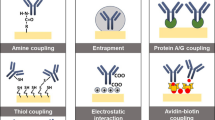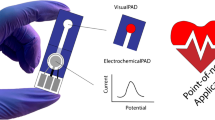Abstract
Milk authenticity of dairy products is of great demand in order to protect consumers from fraudulent products and health risk. Milk-based products produced by goat and sheep milk are located at the top of the list of healthy dairy products, earning the increasing interest of consumers. As a result, these products are extremely vulnerable to adulteration with milk of lower added and nutritional value for profit. In addition, adulterant milks, such as bovine milk, have been accused to cause allergic reactions, especially to sensitive human groups. For these reasons, there is a great need for sensitive and robust analytical methods for milk adulteration detection. This work focused on the development of a DNA-based analytical method based on hybridization assay on spectrally distinct microspheres for adulteration detection of goat and sheep dairy products with bovine milk. The method includes (a) DNA isolation from dairy products, (b) amplification of DNA sequences specific to each animal species and (c) hybridization assay on the surface of distinct microspheres. The identification of the animal origin is accomplished by species-specific oligonucleotide probes coupled to the microspheres and the hybrids formed are detected by a streptavidin–phycoerythrin conjugate. The microspheres are finally analyzed by flow cytometry. The fluorescence emitted by the reporter molecule phycoerythrin is proportional to the concentration of the DNA content in the sample. As low as 0.01% bovine milk in goat milk and 0.05% in sheep milk was able to be detected by the proposed method. The method offers very good detectability, sensitivity and reproducibility.




Similar content being viewed by others
References
Kamal M, Karoui R (2015) Analytical methods coupled with chemometric tools for determining the authenticity and detecting the adulteration of dairy products: a review. Trends Food Sci Technol 46:1–22
Woolfe M, Primrose S (2004) Food forensics: using DNA technology to combat misdescription and fraud. Trends Biotechnol 22:222–226
Moore JC, Spink J, Lipp M (2012) Development and application of a database of food ingredient fraud and economically motivated adulteration from 1980 to 2010. J Food Sci 77:118–126
Rentsch J, Weibel S, Ruf J, Eugster A, Beck K, Köppel R (2013) Interlaboratory validation of two multiplex quantitative real-time PCR methods to determine species DNA of cow, sheep and goat as a measure of milk proportions in cheese. Eur Food Res Technol 236:217–227
Hurley IP, Ireland HE, Coleman RC, Williams JHH (2004) Application of immunological methods for the detection of species adulteration in dairy products. Int J Food Sci Technol 39:873–878
Hurley IP, Coleman RC, Ireland HE, Williams JHH (2006) Use of sandwich IgG ELISA for the detection and quantification of adulteration of milk and soft cheese. Int Dairy J 16:805–812
Costa N, Ravasco F, Miranda R et al (2008) Evaluation of a commercial ELISA method for the quantitative detection of goat and cow milk in ewe milk and cheese. Small Rumin Res 79:73–79
Song H, Xue H, Han Y (2011) Detection of cow’s milk in Shaanxi goat’s milk with an ELISA assay. Food Control 22:883–887
Ren QR, Zhang H, Guo HY et al (2014) Detection of cow milk adulteration in yak milk by ELISA. J Dairy Sci 97:6000–6006
Colak H, Aydin A, Nazli B, Ergun O (2006) Detection of presence of cow’s milk in sheep’s cheeses by immunochromatography. Food Control 17:905–908
Kokkinos C, Angelopoulou M, Economou A et al (2016) Lab-on-a-membrane foldable devices for duplex drop-volume electrochemical biosensing using quantum dot tags. Anal Chem 88:6897–6904
Sakti SP, Chabibah N, Ayu SP et al (2016) Development of QCM biosensor with specific cow milk protein antibody for candidate milk adulteration detection. J Sensors 2016:1–7
Veloso ACA, Teixeira N, Peres AM et al (2004) Evaluation of cheese authenticity and proteolysis by HPLC and urea-polyacrylamide gel electrophoresis. Food Chem 87:289–295
Nicolaou N, Xu Y, Goodacre R (2011) MALDI-MS and multivariate analysis for the detection and quantification of different milk species. Anal Bioanal Chem 399:3491–3502
Calvano CD, De Ceglie C, Monopoli A, Zambonin CG (2012) Detection of sheep and goat milk adulterations by direct MALDI-TOF MS analysis of milk tryptic digests. J Mass Spectrom 47:1141–1149
Calvano CD, de Ceglie C, Aresta A, Facchini LA, Zambonin CG (2013) MALDI-TOF mass spectrometric determination of intact phospholipids as markers of illegal bovine milk adulteration of high-quality milk. Anal Bioanal Chem 405:1641–1649
Hrbek V, Vaclavik L, Elich O, Hajslova J (2014) Authentication of milk and milk-based foods by direct analysis in real time ionization–high resolution mass spectrometry (DART–HRMS) technique: a critical assessment. Food Control 36:138–145
Czerwenka C, Muller L, Lindner W (2010) Detection of the adulteration of water buffalo milk and mozzarella with cow’s milk by liquid chromatography–mass spectrometry analysis of β-lactoglobulin variants. Food Chem 122:901–908
Russo R, Severino V, Mendez A et al (2012) Detection of buffalo mozzarella adulteration by an ultra-high performance liquid chromatography tandem mass spectrometry methodology. J Mass Spectrom 47:1407–1414
Bernardi N, Benetti G, Haouet NM et al (2015) A rapid high-performance liquid chromatography-tandem mass spectrometry assay for unambiguous detection of different milk species employed in cheese manufacturing. J Dairy Sci 98:8405–8413
Camerini S, Montepeloso E, Casella M et al (2016) Mass spectrometry detection of fraudulent use of cow whey in water buffalo, sheep, or goat Italian ricotta cheese. Food Chem 197:1240–1248
Müller L, Barták P, Bednár P et al (2008) Capillary electrophoresis-mass spectrometry—a fast and reliable tool for the monitoring of milk adulteration. Electrophoresis 29:2088–2093
Dvorak L, Mlcek J, Sustova K (2016) Comparison of FT-NIR spectroscopy and ELISA for detection of adulteration of goat cheeses with cow’s milk. J AOAC Int 99(1):180–186
Nicolaou N, Xu Y, Goodacre R (2010) Fourier transform infrared spectroscopy and multivariate analysis for the detection and quantification of different milk species. J Dairy Sci 93:5651–5660
Gonçalves BHRF, de Jesus Silva G, Pontes SFO, Fontan R, do Egito AS, Ferrão SPB (2016) Evaluation of the peptide profile with a view to authenticating buffalo mozzarella cheese. Int J Food Sci Technol 51:1586–1593
Addeo F, Pizzano R, Nicolai MA et al (2009) Fast isoelectric focusing and antipeptide antibodies for detecting bovine casein in adulterated water buffalo milk and derived mozzarella cheese. J Agric Food Chem 57:10063–10066
Špoljarić J, Mikulec N, Plavljanić D, Radeljević B, Havranek J, Antunac N (2013) Proving the adulteration of ewe and goat cheeses with cow milk using the reference method of isoelectric focusing of γ-casein. Mljekarstvo Dairy 63(3):115–121
Dias LA, Peres AM, Veloso ACA et al (2009) An electronic tongue taste evaluation: identification of goat milk adulteration with bovine milk. Sens Actuators B Chem 136:209–217
De S, Brahma B, Polley S et al (2011) Simplex and duplex PCR assays for species specific identification of cattle and buffalo milk and cheese. Food Control 22:690–696
Eaqub Ali AMd, Abd Hamid SB et al (2016) Lab-on-a-chip-based PCR-RFLP assay for the detection of malayan box turtle (Cuora amboinensis) in the food chain and traditional Chinese medicines. PLoS ONE. doi:10.1371/journal.pone.0163436
di Rienzoa V, Miazzi MM et al (2016) An enhanced analytical procedure to discover table grape DNA adulteration in industrial musts. Food Control 60:124–130
Ganopoulos I, Sakaridis I, Argiriou A et al (2013) A novel closed-tube method based on high resolution melting (HRM) analysis for authenticity testing and quantitative detection in Greek PDO Feta cheese. Food Chem 141:835–840
López-Calleja I, González I, Fajardo V et al (2005) Application of polymerase chain reaction to detect adulteration of sheep’s milk with goats’ milk. J Dairy Sci 88:3115–3120
Mafra I, Roxo Á, Ferreira IMPLVO, Oliveira MBPP (2007) A duplex polymerase chain reaction for the quantitative detection of cows’ milk in goats’ milk cheese. Int Dairy J 17:1132–1138
Díaz ILC, Alonso IG, Fajardo V et al (2007) Application of a polymerase chain reaction to detect adulteration of ovine cheeses with caprine milk. Eur Food Res Technol 225:345–349
Golinelli LP, Carvalho AC, Casaes RS et al (2014) Sensory analysis and species-specific PCR detect bovine milk adulteration of frescal (fresh) goat cheese. J Dairy Sci 97:6693–6699
Maškova E, Paulíčková I (2006) PCR-based detection of cow’s milk in goat and sheep cheeses marketed in the Czech Republic. Czech J Food Sci 24:127–132
Bai WL, Yin RH, Zhao SJ et al (2009) Rapid detection of bovine milk in yak milk using a polymerase chain reaction technique. J Dairy Sci 92:1354–1360
Reale S, Campanella A, Merigioli A, Pilla F (2008) A novel method for species identification in milk and milk-based products. J Dairy Res 75:107–112
Gonçalves J, Pereira F, Amorim A, van Asch B (2012) New method for the simultaneous identification of cow, sheep, goat, and water buffalo in dairy products by analysis of short species-specific mitochondrial dna targets. J Agric Food Chem 60:10480–10485
Dalmasso A, Civera T, La Neve F, Bottero MT (2011) Simultaneous detection of cow and buffalo milk in mozzarella cheese by real-time PCR assay. Food Chem 124:362–366. doi:10.1016/j.foodchem.2010.06.017
Cottenet G, Blancpain C, Golay PA (2011) Simultaneous detection of cow and buffalo species in milk from China, India, and Pakistan using multiplex real-time PCR. J Dairy Sci 94:3787–3793
López-Calleja I, González I, Fajardo V et al (2007) Quantitative detection of goats’ milk in sheep’s milk by real-time PCR. Food Control 18:1466–1473
Agrimonti C, Pirondini A, Marmiroli M, Marmiroli N (2015) A quadruplex PCR (qxPCR) assay for adulteration in dairy products. Food Chem 187:58–64
Fajardo V, Gonzalez I, Rojas M, Garcia T, Martin R (2010) A review of current PCR-based methodologies for the authenticity of meats from game animal species. Trends Food Sci Technol 21:408–421
Liu YF, Gao JL, Yang YF, Ku T, Zan LS (2014) Novel extraction method of genomic DNA suitable for long-fragment amplification from small amounts of milk. J Dairy Sci 97:6804–6809
European Commission (2001) EC 213/2001 Methods for the analysis and quality evaluation of milk and milk products. Off J Eur Communities 44:L37/31–L37/99
Author information
Authors and Affiliations
Corresponding author
Ethics declarations
Conflict of interest
Maria L. Kounelli and Despina P. Kalogianni declares that they have no conflict of interest.
Compliance with ethics requirements
The article does not contain any studies with human or animal subjects.
Rights and permissions
About this article
Cite this article
Kounelli, M.L., Kalogianni, D.P. A sensitive DNA-based fluorometric method for milk authenticity of dairy products based on spectrally distinct microspheres. Eur Food Res Technol 243, 1773–1781 (2017). https://doi.org/10.1007/s00217-017-2882-6
Received:
Revised:
Accepted:
Published:
Issue Date:
DOI: https://doi.org/10.1007/s00217-017-2882-6




